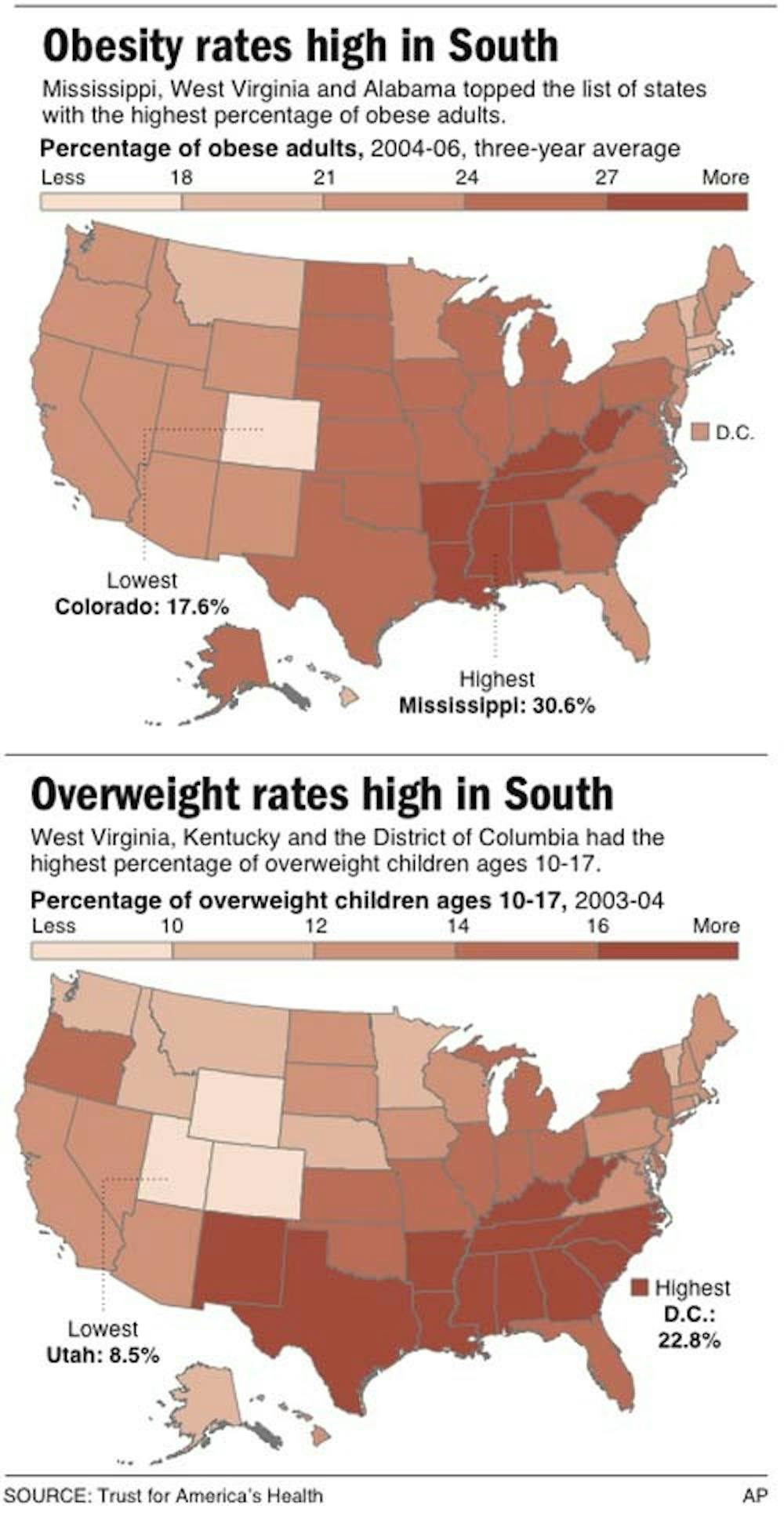INDIANAPOLIS - Indiana remains one of the nation’s fattest states, weighing in at ninth worst in a new national report which found that nearly 27 percent of Hoosier adults are obese.\nMonday’s report by the Trust for America’s Health put Indiana’s percentage of obese adults at 26.8 percent – up from 26.2 percent last year and 25.2 percent in 2005.\nDespite that increase, Indiana’s adult obesity ranking actually improved – last year it was eighth – in the annual report by the research group that focuses on disease prevention.\nThat’s because no states obesity rates showed any improvement in 2006 despite a growing awareness of the problem, said Jeff Levi, the Washington, D.C.-based group’s executive director.\nHe said the nation needs “a breakthrough in terms of policies and results” to combat rising obesity that heightens the risk for diabetes, heart problems and other chronic diseases.\nThis year’s rankings of the 50 states and the District of Columbia found that 25.9 percent of Hoosier adults said they did not engage in any physical activity last year. The national average is 22 percent.\nAmong children, the report showed that 15.6 percent of Indiana youngsters ages 10 to 17 were overweight -– the nation’s 15th highest rate in that category.\nWeilin Long, who oversees the state’s efforts to combat obesity, said the lack of progress has been frustrating but that Indiana is pushing ahead with initiatives to slim the state down.\n“We’re not getting any better. But we’re not alone,” she said.\nLong said that 14 state officials met last month to review efforts by 29 other states to combat obesity in a search for the best approaches for promoting healthy eating, physical activity and other policies.\nShe said the analysis showed that what’s needed is collaboration between government, schools, businesses and families to combat poor nutrition and physical inactivity.\n“Nobody can do it alone. We have to rely on community support, we have to rely on the family and we also have to have regulations and policies in place,” said Long, who’s director of the community nutrition/obesity prevention division of the Indiana State Department of Health.\nThe report by the Trust for America’s Health showed that Mississippi had the nation’s greatest weight problem with more than 30 percent of its adults considered obese, although West Virginia and Alabama are trailing just behind.\nColorado remained the nation’s leanest state with an obesity rate projected at 17.6 percent.\nTo measure obesity rates, Trust for America’s Health compares data from 2003-2005 with 2004-2006. It combines data from three years to improve the accuracy of projections. The data come from a survey of height and weight taken over the telephone.\nBecause the information comes from a personal estimate, some believe it is conservative.\nFor example, a Centers for Disease Control and Prevention study released last year showed a national obesity rate of about 32 percent – higher than was cited for any of the states in the Trust for America’s Health report. The CDC’s estimate came from weighing people, not interviews.\nGenerally, anyone with a body mass index greater than 30 is considered obese. The index is a ratio that takes into account height and weight.
Report finds Indiana among 10 fattest states

Get stories like this in your inbox
Subscribe





